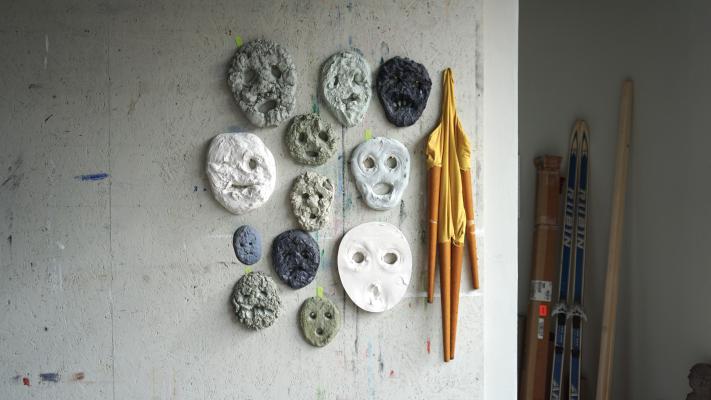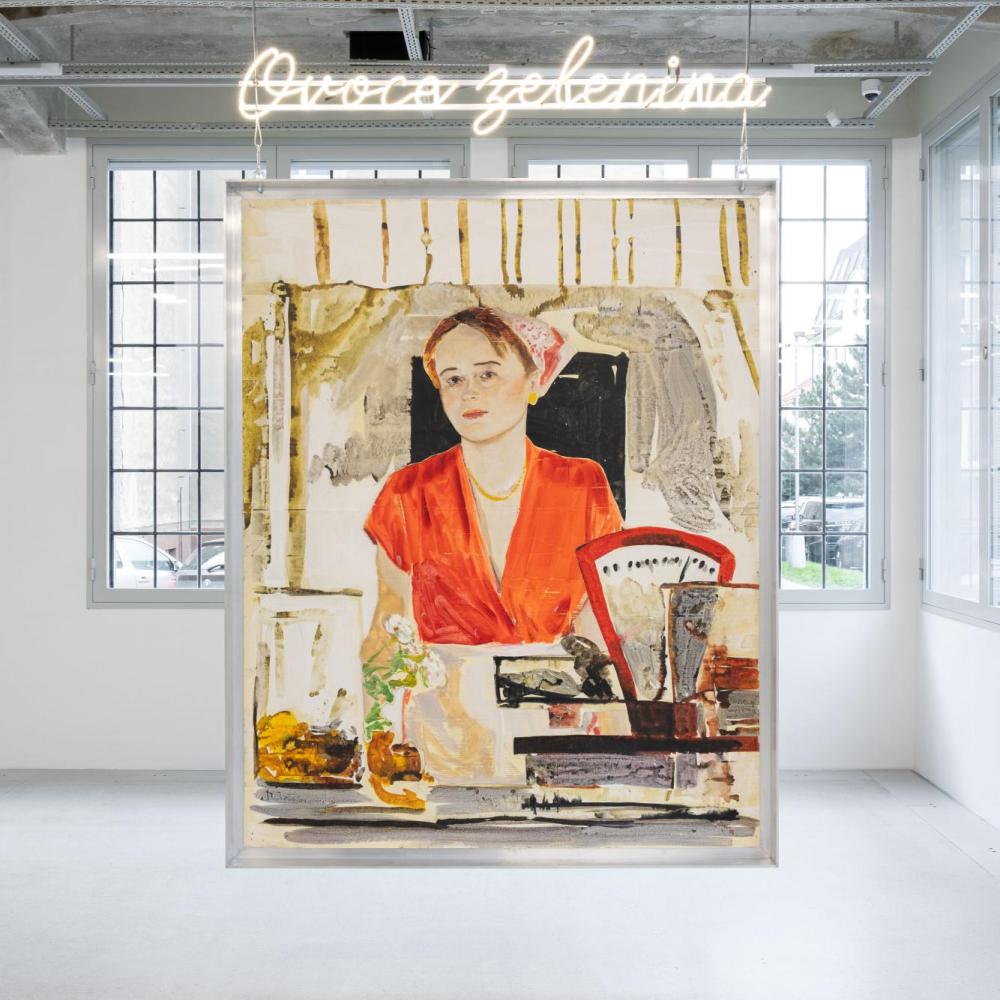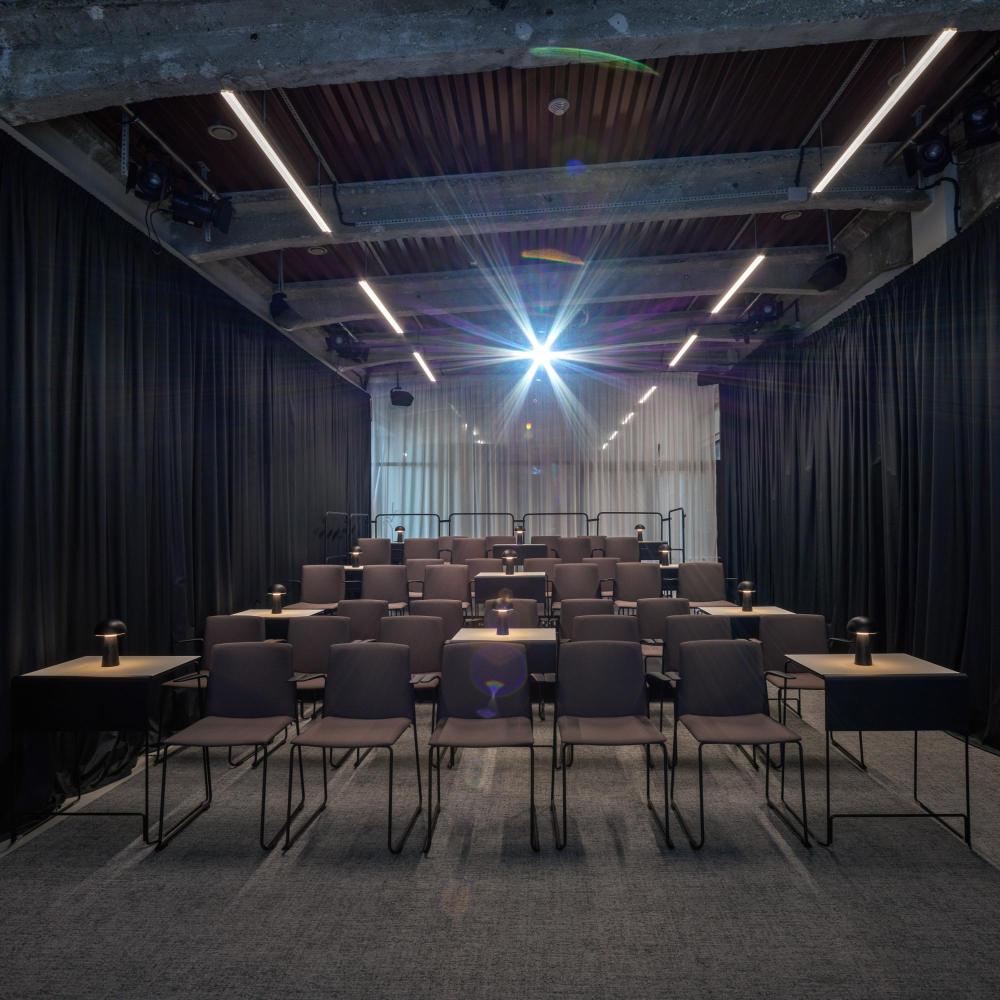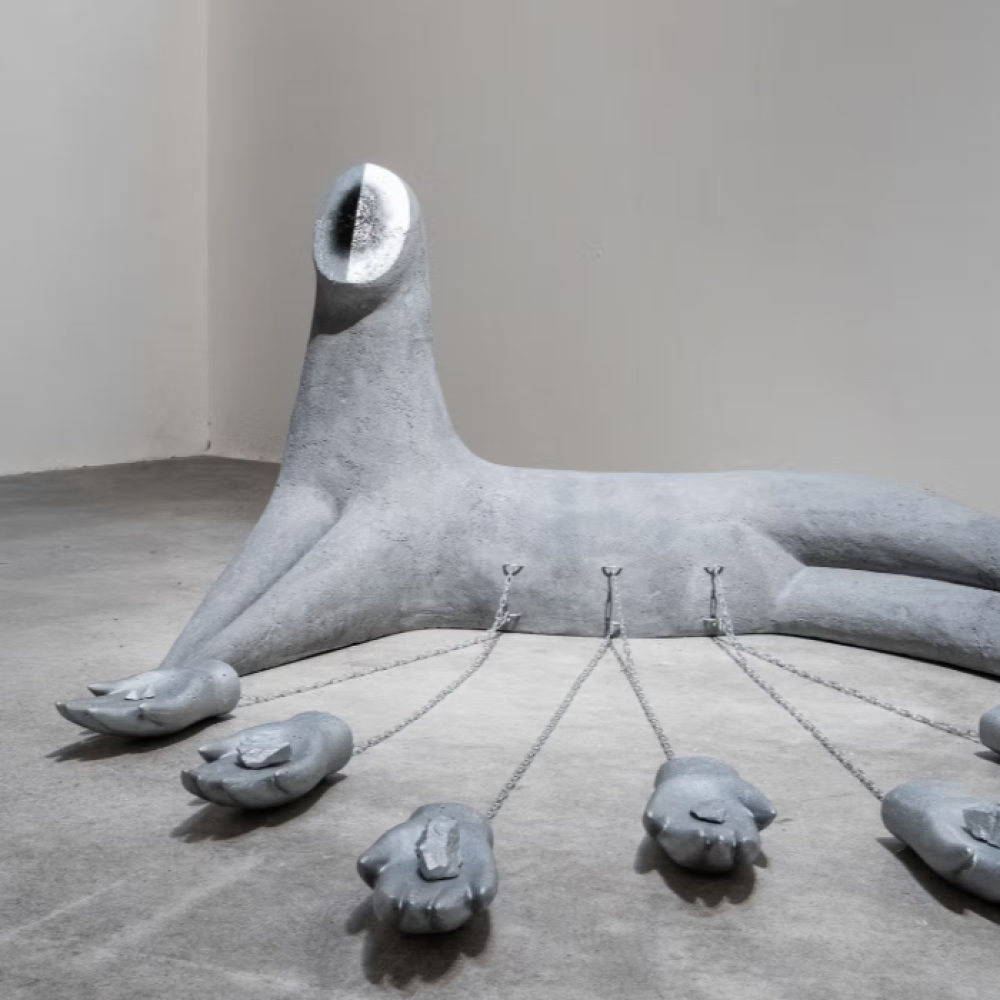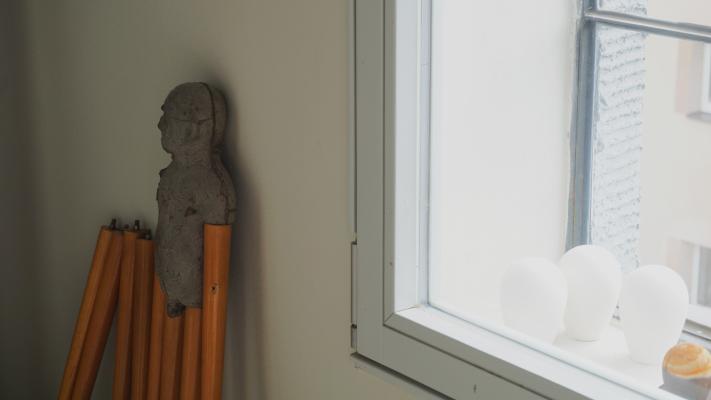
Patrik Adamec (*1994) is a native of Chomutov, North Bohemia, but spent a decade of his life with his parents in Florida. After returning to the Czech Republic, Patrik decided to study architecture and industrial design at the Czech Technical University. In 2017 he was accepted to the Academy of Fine Arts. Patrik Adamec is a great researcher, throwing himself into exploring city streets with great imagination and a sincere interest in human archetypes. One could say that for him the city is not just a group of buildings, but a living ecosystem where human stories intertwine. The workbench, which he considers a mirror of the soul, is full of unwanted, discarded and forgotten treasures from urban explorations. He not only observes, but actively collects fragments of everyday life, which he transforms into works of art. His playful objects reflect the question, "What is it?" He creates a connection between convention and contingency, leaving the viewer unsettled and wondering. His work is an invitation to look into a different perspective. To a world that surrounds each of us, but is often overlooked.
In 2023, you won the Critics' Prize for Young Painting as a sculptor. In the reliefs you competed with, you used sculptural rather than painterly principles. What were the reactions of those around you and how important was the win to you?
These works were a sculptor's way of grasping painting. I have always seen painting as a great inspiration, and to some extent I have always somehow flirted with a painting intervention, alongside the sculptural one. But I never felt the need to present such work. But at one time I was dealing with some personal issues and my creative language took this direction. It was introspective, as if my eleven or twelve year old self, out of context, had a chance to express itself. The works are based on sculptural principles, they are reliefs, but at the same time I use the canvas, the brush, the paint as such... It seems to me that from a conceptual point of view the combination works, or can work.
You've developed two conceptually and visually distinct positions - one is more colorful and poppy, and the other is more raw with existential themes. How do you switch between these positions? Do you have a system in place?
At first glance they may look different, visually for sure, but conceptually I feel they are actually the same. Primarily I try to work with a feeling, something that you can identify with. I like the almost almost pejorative term landscape, I'm playing with maybe a kind of grotesque, I found it funny to portray the landscape in a very simplistic way, but at the same time there is also an existential desire to get closer to the landscape, to go into it, because one constantly has to define oneself in relation to the world around you, or to work and so on. Work is the fundamental theme for me, the hard-working person. I deal with when one can be in the landscape or get lost in the landscape, these are the kind of open polemics that I think about. I like working with paint, I like it as a material. The ones I use are straightforward, they don't allow them to blend, and that's why you get that poppier visual. The colours are unambiguous - yellow symbolises something, as do blue and green. Their straightforwardness makes it easier for me to get to the thing being depicted. At the same time, the industrial colours I use are very alienated, so a landscape that one can identify with suddenly becomes alienated, existential for me.
I'm currently finding out what it's like to switch between my two positions. Each of these creative technologies requires its own space, so it's sometimes challenging in the studio. But I have a system, I have the studio divided in two, but sometimes I overdo it, and it all blends into one and it becomes a kind of pelmelo. But it's not just about technology, now when I'm working on my exhibition projects, how and what to exhibit, I find that both of those things can support each other and at the same time crash. I don't want to combine them at all costs, but I see the potential in some kind of symbiosis. I don't want to separate just paintings and just sculptures though, I enjoy both approaches, I enjoy making both things.
Your thesis dealt with instability. What is it about this subject that interests you so much?
I myself am unstable, we all are. It's something one can identify with. I find a certain lability in sculpture and its possibilities. I'm frustrated by fixed objects, I'm trying to work on myself to break the barrier that when you create a thing, it's given in a certain way, it's fixed, it's set in a certain context and space, there may be an impression associated with it, but I feel that it can be constantly worked on, it can be constantly changed. For me, lability is that transformation. I also have very difficult moments when I'm creating on my own and I can't decide if I've chosen the right option out of the many, and that's another of the labilities for me.
One of your sculpture series deals with portraits of drunk people you had the opportunity to meet when you were working behind a bar. Why drunks?
I was interested in the voluntary deformation, the transformation. Just like the lability - position, movement, mental changes, frame of mind. An innocent person has often turned into an aggressive individual. At the same time, that was the thing that bothered me a lot about the work, and I try to find something to enjoy in every situation, even in one that weighs me down or that I don't enjoy. I entertained myself by watching and exploring that visual and psychological transformation.
You also explore themes of finding home and roots in your work. What are your reasons for this?
It's personal for me. I'm rummaging around within myself, maybe trying to find peace in this way, or resolve some issues within myself. Home is a complex subject, and has its own merits among people. I'm trying to stir up that note in some way through my artwork, to find answers to the questions I have within myself. At the same time, this theme is deeply rooted in society, and it is the themes that resonate among people that interest me.
You were a guest on Petr Dub's podcast AFTER AVU with Blanka Čermáková. The title of the episode was "How to (not) sell art?". What experience do you have with galleries and selling on your own?
I have some experience, but it is limited. I like to discuss the topic of selling art because it's something that is not taught in art schools, which I think is a mistake. It should be communicated so that young artists are better prepared for what lies ahead. It's quite challenging for sculptors to sell things on their own, we need galleries, they're connected vessels in a way.
Your first solo show, Stuck, took place in 2023 at the Hybernska Campus. Was it a breakthrough for you?
Yes, it was definitely a breakthrough for me to see the works in that line-up, and it was also a chance to figure out how to deal with myself as a creator, with the space and the medium, how to find relevance in what I was doing and how to move on. The first solo show is always a breakthrough in some way, it was a great experience, but it wasn't easy, it cost me a lot and I lost a lot. 2023 was a challenging, difficult but beautiful time for me.
